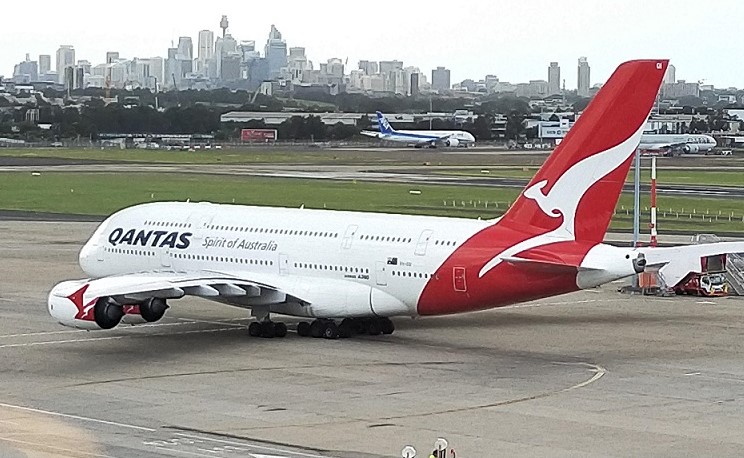Qantas profit hit by fuel costs and exchange rate
22 August, 2019
4 min read
Industry News

Geoffrey Thomas
By joining our newsletter, you agree to our Privacy Policy


Australia's Qantas Group posted an Underlying Profit Before Tax of A$1.30 billion and a Statutory Profit Before Tax of A$1.27 billion for the Financial Year 2019 ending June 30.
Down 17 per cent lower compared with the airline group’s record profit in FY18, it was impacted by an A$614 million increase in fuel costs from higher oil prices and a further $154 million of the foreign exchange impacts on non-fuel net expenditure.
The airline said that all key parts of the Group’s portfolio remain strongly profitable, generating significant cash flow that allows for ongoing investment as well as shareholder returns.
Qantas CEO Alan Joyce said the FY19 performance was particularly positive given mixed market conditions.
“This result shows the strength of our individual businesses but also the strength of our portfolio as a whole. Even with headwinds like fuel costs and foreign exchange, we remain one of the best-performing airline groups in the world.
“Our performance is the result of having the right strategy and the ability to deliver it.
“Domestically, our dual-brand approach with Qantas and Jetstar continued to give us a leadership position in the corporate, premium leisure and budget travel categories, all with strong margins.
“Qantas International has improved its competitive position by evolving its fleet, network and partnerships. We’ve carved out some unique advantages like the Perth-London route and there is a lot of value still to be unlocked through our alliances.
“Qantas Loyalty returned to double-digit earnings growth in the second half, thanks to new revenue streams from insurance and financial services as well as improvements to the Frequent Flyer program.
“The simple message from this result is that the Qantas Group has solid foundations to keep investing and innovating, and to keep rewarding our shareholders as a result.
"Looking ahead, the overall market remains mixed. Domestically, we’re seeing weakness in the price-sensitive leisure market but premium leisure demand is steady.
“Overall demand from our corporate customers is flat, with continued strength in the resources sector offsetting weaker demand from other industries, like financial services and telecommunications. In competitive terms, we’re growing our overall share of the corporate and SME sectors.
“Internationally, the outlook remains positive for premium international travel demand, helped by a reduction in broader market capacity.
“Our anticipated flat Group domestic capacity for the first half of FY20 reflects the mixed environment, and we’ll continue to monitor our settings against demand and our strategic position,” said Mr Joyce.
The airline said that it is investing in the future with key initiatives including:
- Three research flights for Project Sunrise before the end of calendar 2019.
- A complete refurbishment of Qantas’ 12 Airbus A380 aircraft, including upgrades to each class of cabin, a new on-board lounge and 27 per cent increase in premium seating. Work on the first aircraft is underway, which is expected to be in service by September.
- Delivery of six additional 787-9s for Qantas International from October 2019, taking the total fleet to 14 aircraft.
- Increasing lounge capacity in Qantas’ Singapore hub by 60 per cent, including an expansion to the existing Business Lounge and opening of a new First lounge.
- Rolling out $25 million of improvements to Frequent Flyer, including 1 million more reward seats per annum, reducing some carrier charges for points bookings by up to 50 per cent and cutting the points required for international Economy seats by up to 10 per cent.
- Progress towards cutting 100 million single-use plastics by end-2020 and eliminating 75 per cent of waste to landfill by end-2021.
- Preparations to introduce the A321 NEO to Jetstar, with 18 aircraft to begin arriving from mid-2020.
- The total fuel bill is expected to increase to A$3.95 billion (up $100 million) and is fully hedged.
- Group capacity is expected to increase by 1 per cent in the first half of FY20 with domestic flat and international up.
Get the latest news and updates straight to your inbox
No spam, no hassle, no fuss, just airline news direct to you.
By joining our newsletter, you agree to our Privacy Policy
Find us on social media
Comments
No comments yet, be the first to write one.

